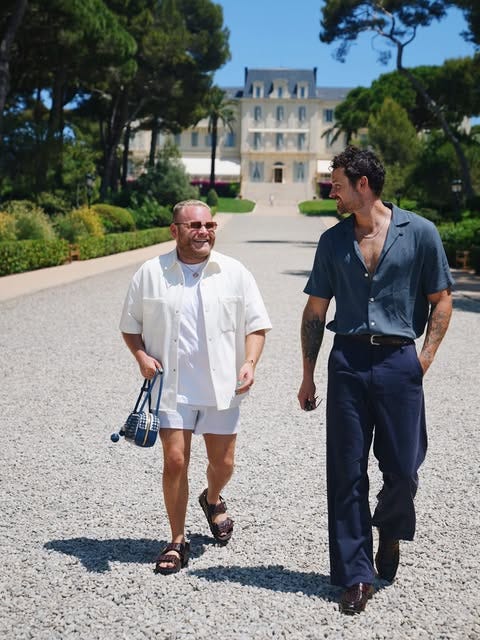Coup on the Croisette: Creators, Brands & the Gen Z Remix of Entertainment
At Cannes Lions, it is follow the money — and attention — as faces that turn heads are a long way from the studio lot (even if some still covet Hollywood)
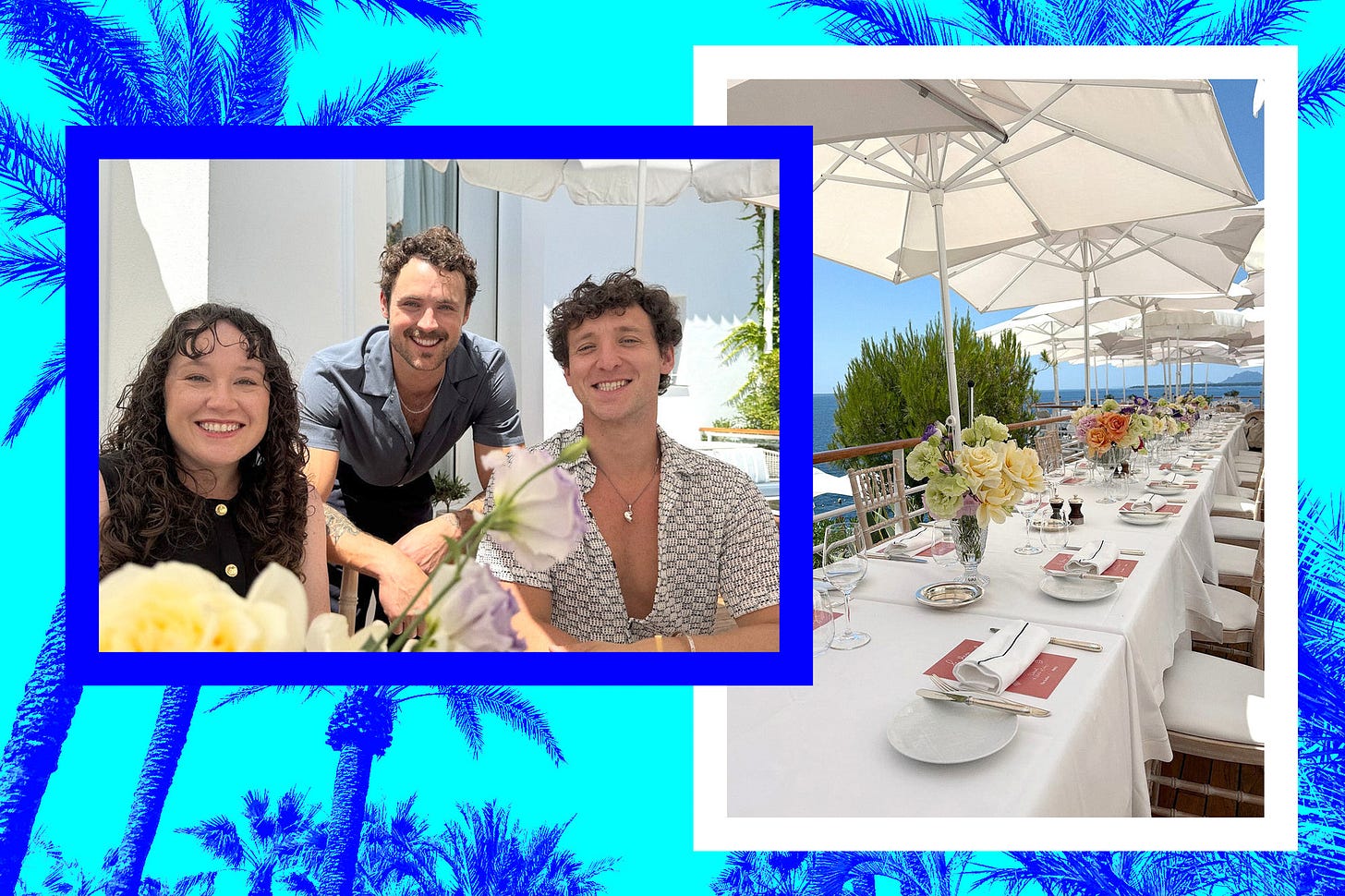
I write about the creator economy at Like & Subscribe, a standalone newsletter that’s being sampled for a limited time for paid subscribers to The Ankler. I reported on the writers’ civil war at Substack, wrote about the boom in microdramas and covered the talent war between Netflix and YouTube. Send me tips, memes and ideas at natalie@theankler.com
Did I see you at the du Cap? I’ll have full details about who came to our intimate South of France creator-studded lunch yesterday with co-host Meta, but first…
It’s au revoir, Cannes Lions! It’s been a busy week for The Ankler crew at the International Festival of Creativity, which officially wraps up Friday. I sat down live with Jake Shane and Josh Richards, whose rabid fanbases that came to see our talks included a gaggle of awestruck University of Georgia women incredibly interested in the creator economy and scaling businesses (much like the brands here in Cannes too). More on that below. But as I previewed, creators have been everywhere. In fact, they and athletes like Draymond Green and Russell Westbrook were swarming the Croisette, while traditional stars of the TV and film variety were as absent as American-style air-conditioning during a sweltering French summer.
Amazon had a booth dedicated to its influencers program (right next door to one for Twitch) at its appropriately nautical-themed Amazon Port event space. And a number of top creators, including Adam W and Dhar Mann, popped into the Monday night party Forbes threw for its newly released Top Creators list. (Bet you can guess who topped the list.)
On Tuesday, Haley Kalil showed up to YouTube’s press breakfast, where she and company executives previewed a new tool, Open Call, designed to help brands connect with creators for sponsored posts. Essentially, brands can post briefs that creators can respond to and craft sponsored videos for approval. If the brand likes the work, the creator gets paid. Emma Chamberlain hosted a pop up for her new coffee collab with Pinterest. And at the annual UTA and MediaLink bash on Tuesday night, I spotted Shane, Alix Earle, Colin Rosenblum and Samir Chaudry sitting in a VIP area reserved for guests of honor. Hollywood, you’re not at the Polo Lounge anymore…
Now, to our own special event…
If you were at the Hotel du Cap-Eden-Roc on Wednesday, you would have seen me with some of the most exciting creators working today, including Brandon Edelman, Ayan Broomfield, Katie Fang, Kelli Erdmann Butler and Adrian Per, at a lunch hosted by The Ankler and Meta. It was my favorite event of the entire week. Over chateaubriand and grilled sea bass, burrata and fresh tomatoes, The Traitors’ Dylan Efron, Marina Mogilko and Chloe Shih shared with me what brought them to Cannes — from brand activations and panel conversations to meetings with potential partners. Their excitement at attending (many for the first time) was palpable. Magician Julius Dein even humored (and wowed) us by showing off a little of his mentalist magic.
It was fun to watch these creators do what they do best. Throughout the lunch they pulled out their phones and professional cameras to snap photos of their surroundings, including the view of the hotel made famous by Harrison Ford — or for the social media generation, Sofia Richie. Many of those shots soon popped up on Instagram.
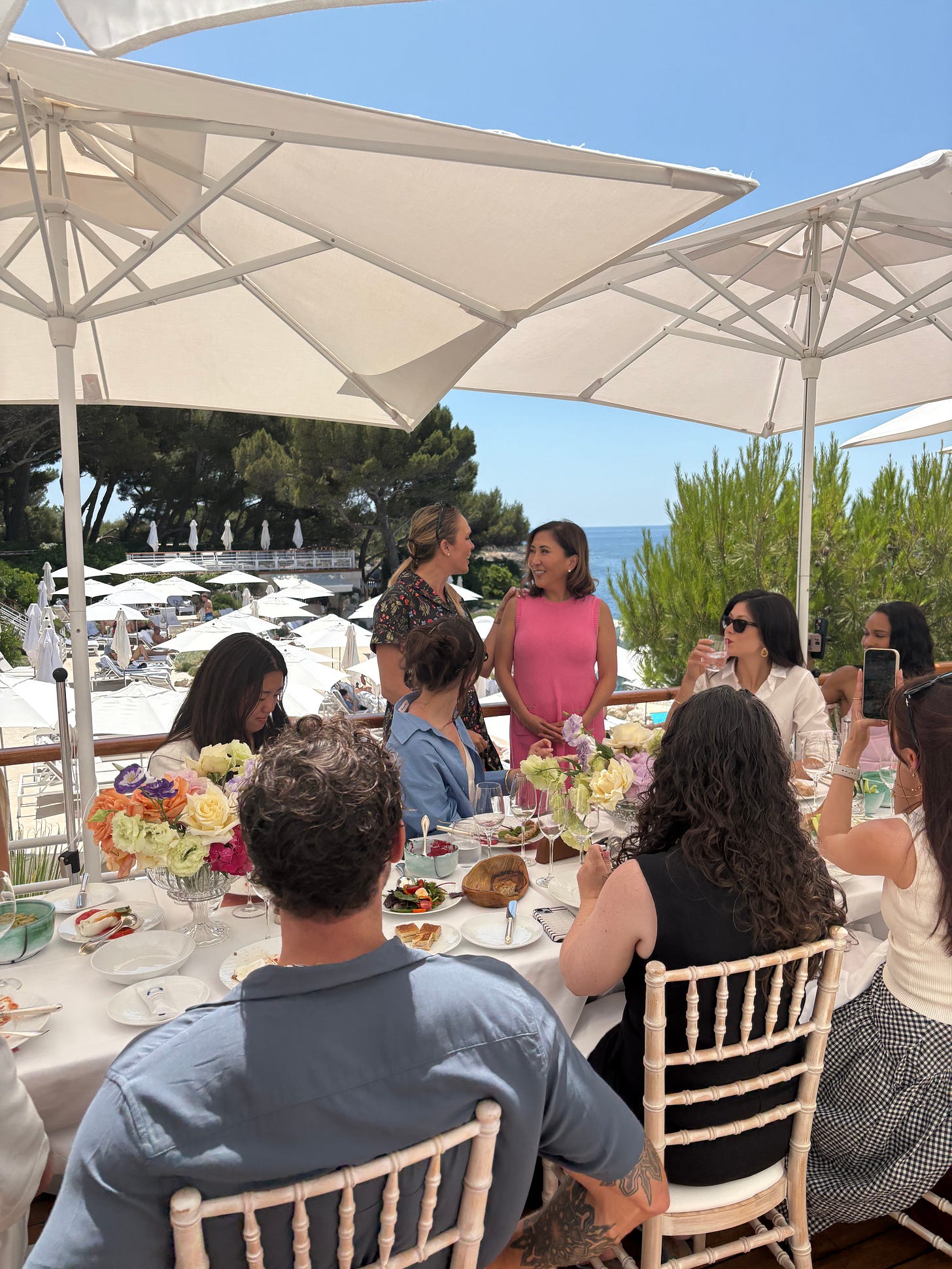
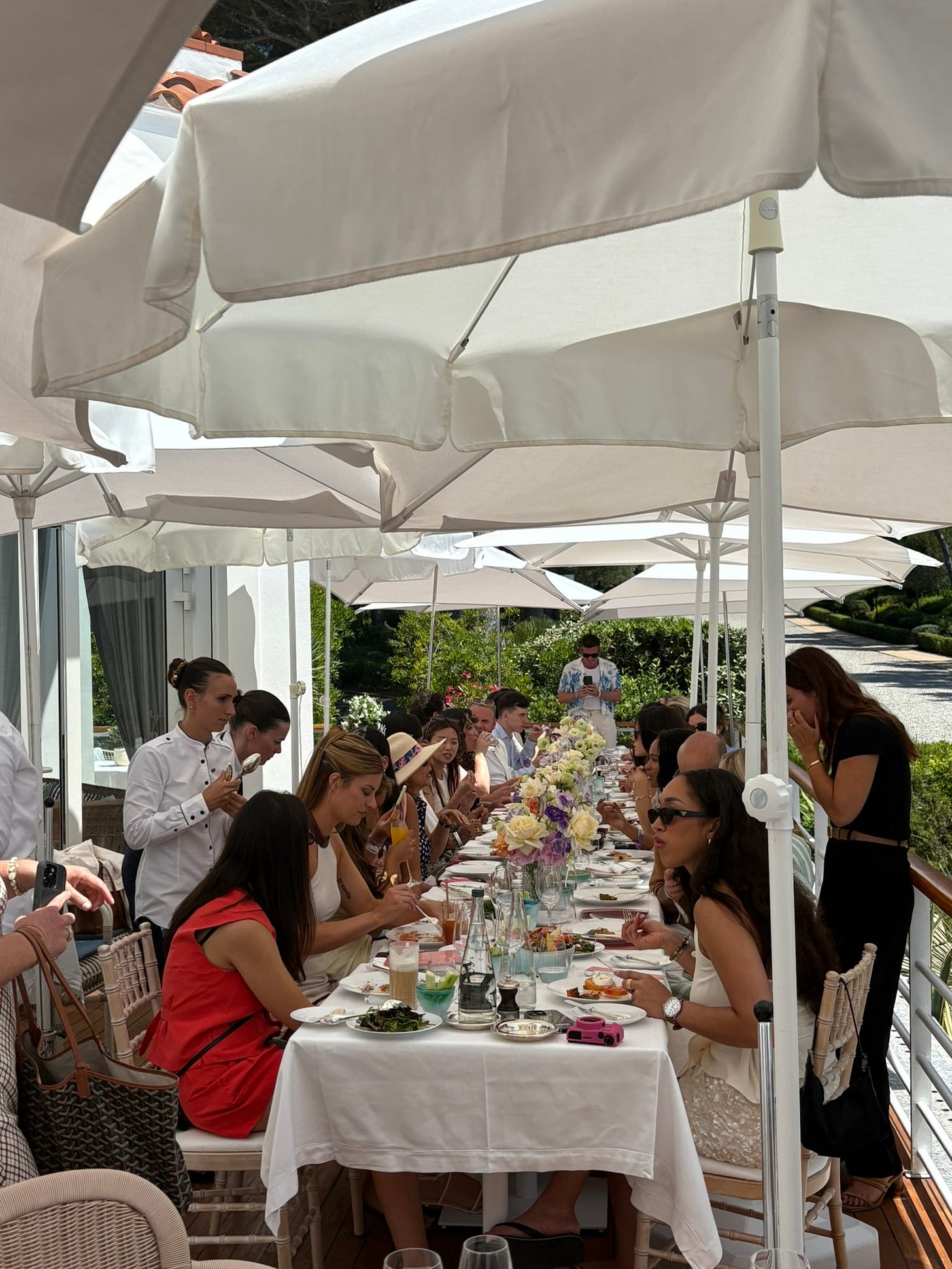
Over on The Ankler, Richard Rushfield wrote this week about the existential crises facing Hollywood as ad spend on creator-led media overtakes that of traditional media, and competition for audiences’ attention becomes even more brutal. But it’s hard not to feel hopeful about the future of entertainment when surrounded by a dynamic bunch of creators, and a sense that some kind of hybrid Hollywood-creator mind-meld is coming. From discussions at the table, it was clear many of the talent still consider Hollywood at the top of the pyramid, yet are creating formats all their own — like Alice Ma, who’s reinventing the concept of a show for TikTok through her company Mad Realities, which is behind the popular series Shop Cats and Keep the Meter Running. As Ankler Media CEO Janice Min remarked to the group of about three dozen, Hollywood is a business built on gatekeeping, but on the internet, the audience decides.
Now, before I catch my plane back to L.A. (just in time to make it down to VidCon for my interview tomorrow with Dhar Mann Studios’ Dhar Mann and Sean Atkins and CAA’s David Freeman), I want to highlight some of my other observations from my time here in France…
YouTube vs. Netflix: A One-Sided Battle (For Now)
It’s fitting that as YouTube continued its months-long 20th anniversary celebration victory tour, Nielsen dropped the latest version of its The Gauge report that showed streaming TV viewing (led by YouTube) overtaking both broadcast and cable viewing combined for the first time. When Nielsen first started releasing this monthly report in spring of 2021, streaming accounted for just 26 percent of TV viewing compared to broadcast’s 25 percent and cable’s 39 percent. Just four years later, streaming makes up nearly 45 percent of all TV consumption, followed by cable with 24 percent and broadcast with 20 percent. In that same period, YouTube has more than doubled its share of the TV viewing pie from 6 percent in spring 2021 (when it was tied with Netflix) to 12.5 percent today, according to Nielsen. Netflix, for what it’s worth, has only grown its share to 7.5 percent.
Perhaps that’s why Netflix co-CEO Ted Sarandos has been getting a little spicy in his commentary about YouTube lately, calling it a place for “killing time” not “spending time,” and saying that because YouTube doesn’t pay creators up front, it could put them at financial risk. Janice read those quotes to YouTube CEO Neal Mohan when she interviewed him at ADWEEK House on Tuesday and asked for his reaction to having clearly “gotten under Hollywood’s skin.”
Mohan didn’t seem too ruffled but managed to get in a jab of his own that made headlines around the fest. “I spend very little time thinking about those types of quotes, and all of my time focused on what’s going to make our creators successful,” he said. “Who am I to say what’s spending time, engaging time, quality time, killing time. I think that’s frankly just the industry kind of talking to itself. It’s all of us as consumers: the 2 billion people that come to YouTube every single day. We get to decide how to spend our time, and increasingly more and more of them are spending it with the amazing creators on YouTube.” You can read and listen to the full interview over at The Ankler.
At the Palais the next day, Mohan took the stage for a keynote presentation where he touted that YouTube Shorts now receives 200 billion daily views, and invited Amelia Dimoldenberg and Alex Cooper out on stage for a conversation about their journeys to YouTube. Dimoldenberg, it was noted, had her show rejected by every Hollywood buyer before finding massive success with Chicken Shop Date on YouTube. Cooper, who moved the video versions of her podcast Call Her Daddy to YouTube after her Spotify deal expired last summer, took aim at her former partner when she said that YouTube allowed her to take the show wide in what felt like a deliberate sideswipe that probably has an interesting backstory.
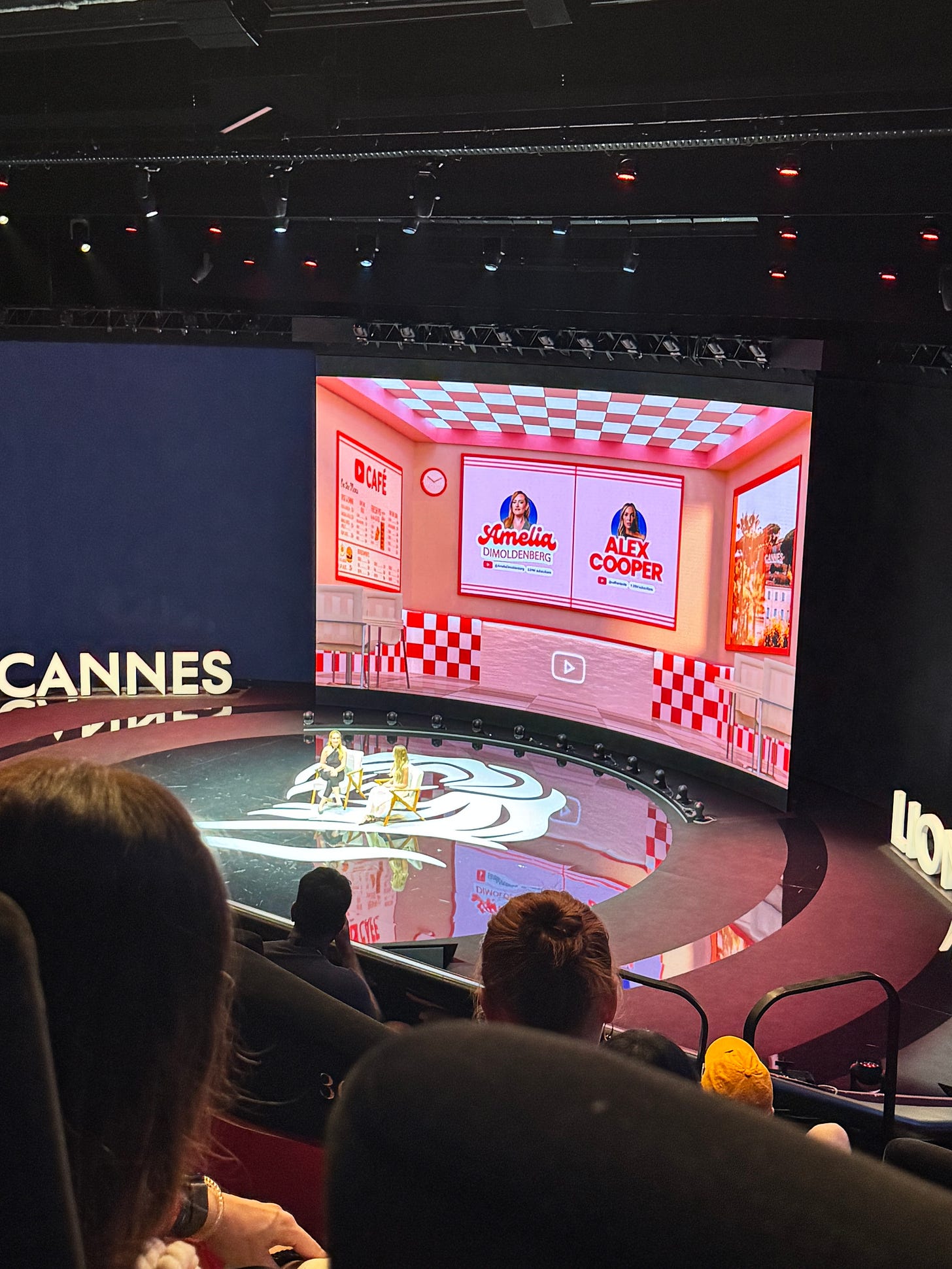
But the YouTube vs. Spotify battle isn’t looking like much of a fight these days either, as YouTube has 1 billion monthly podcast users compared to Spotify’s 678 million total monthly active users.
Creators as the New Multi-Hyphenates
Earlier this week, I sat down for two lively conversations with creators who rose to fame on TikTok and have leveraged their powerful Gen Z audiences in different ways.
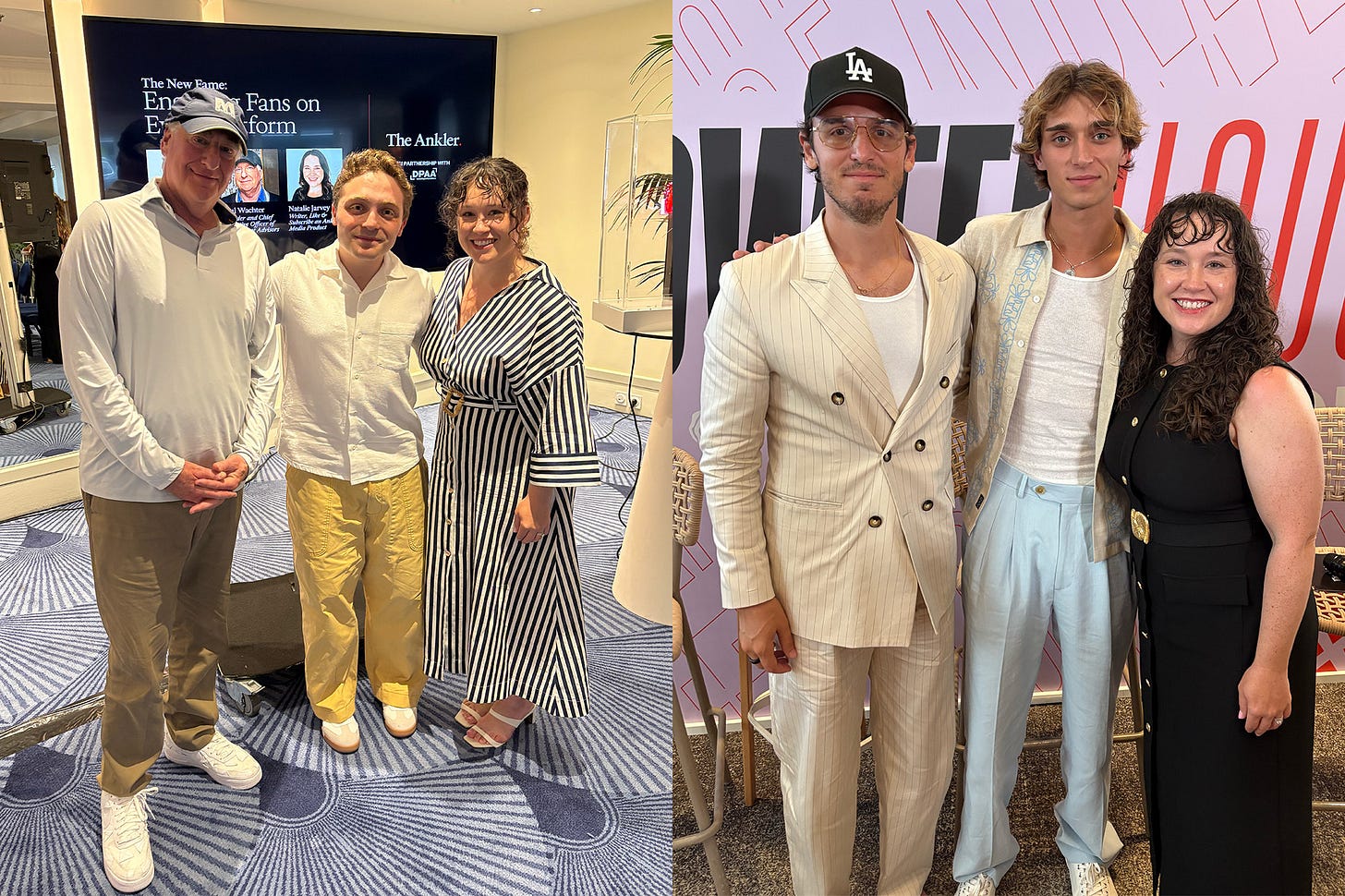
Jake Shane and his friend Paul Wachter, who’s the CEO of Main Street Advisors and also chairman of UTA, joined me for a discussion on Tuesday of how to extend fame from one platform to many others (thanks to DPAA, the global trade marketing association, for sharing its space at the Hotel Martinez with us). Shane has always struck me as incredibly strategic about the videos he posts, and he confirmed that he has approached entertaining on TikTok in a thoughtful way, even if he ultimately couldn’t have predicted what would take off with audiences. He’s being just as considered as he expands into podcasting with his live show, Therapuss, and looks now toward Hollywood — which is very much still an end-goal for him.
Shane’s memorable cameo on this season of Hacks came after some of his sketches made their way to the show’s writers room, he told me. “I felt so fulfilled,” he said of his experience on that set. “That’s really, truly what I always wanted to do, is to act. I felt like I got a taste of it, and I really do want to do more.” He even teased that he’s been working on writing his own project.
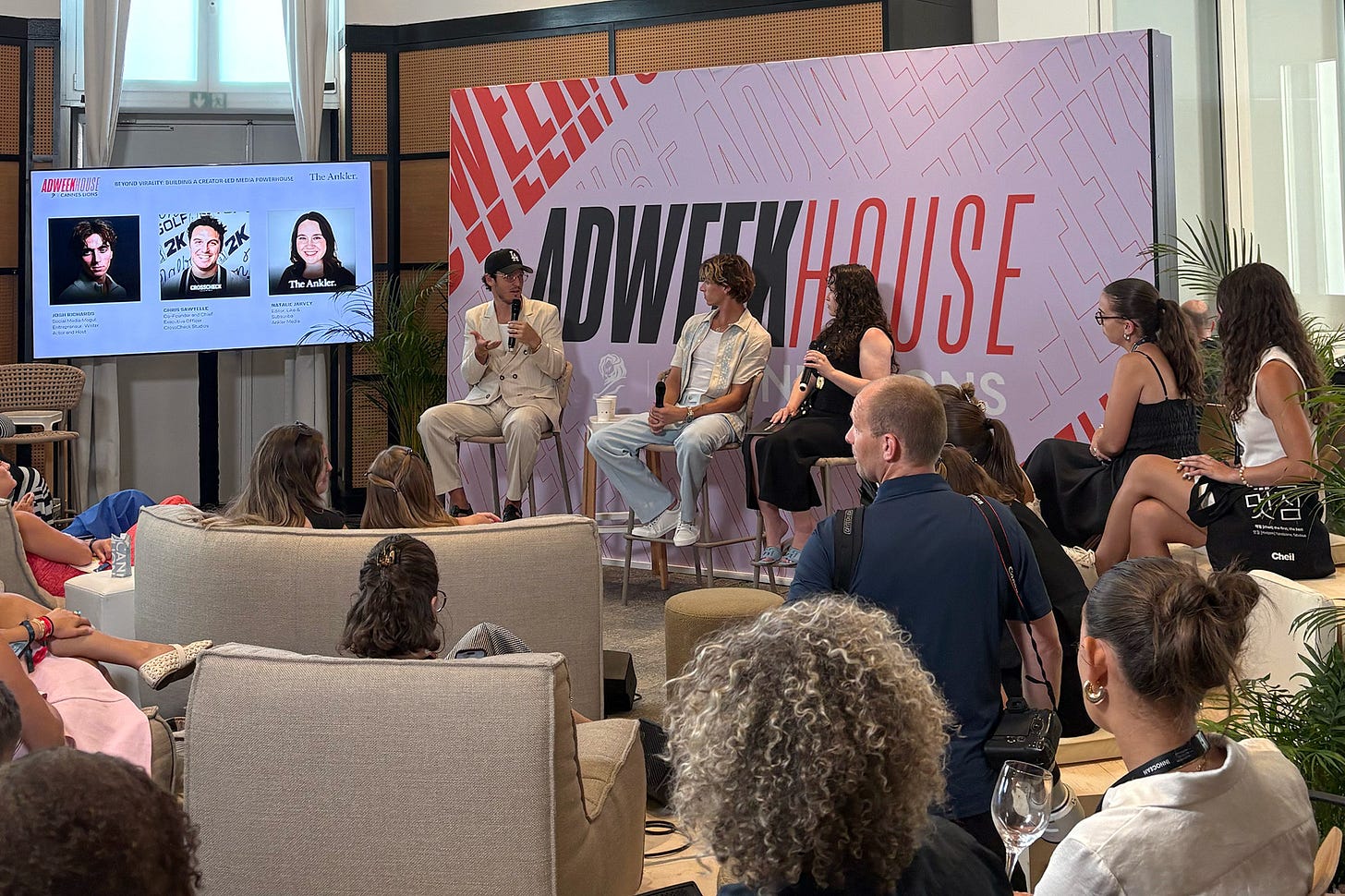
Josh Richards, meanwhile, stumbled into TikTok virality as a teen and pretty quickly realized he needed to align himself with smart people who could help him extend his career off-platform as an entrepreneur and investor. He and his former agent, Chris Sawtelle, spoke with me on Wednesday afternoon at ADWEEK House Cannes Lions about why they launched CrossCheck Studios to produce digital-first shows and branded content, and how they’re leveraging their Gen Z expertise to help Hollywood reach younger audiences. (Keep an ear out for the podcast version of my conversation with Richards and Sawtelle, which I’ll have for you here next week.)
Both Shane and Richards brought up recent creator-led Hollywood projects — including Amazon Prime Video’s Overcompensating, FX’s English Teacher and also Abbott Elementary from former BuzzFeed creator Quinta Brunson — as examples they’ve been studying of how to transition to new mediums. I look forward to tracking whether this new generation of Hollywood creatives can open doors for more digital-first creators.
TikTok — whose executives said during a press briefing I attended this week that they hadn’t had a single conversation during Cannes about the U.S. ban that has been hanging over the company for over a year — was granted another extension to change its ownership structure.
Substack is looking to raise a new round of funding, somewhere between $50 million and $100 million, and is telling potential investors that it generates $45 million in “recurring revenue,” per Eric Newcomer.
Also at Cannes Lions, Candle Media’s Kevin Mayer, acknowledged that Moonbug, the company that owns CoComelon and Blippi, is its most-successful business and one that he will look to sell or IPO in the future.
While a lot of brands flocked to the Croisette, J. Crew used this week to send a group of influentials like Substack writer Becky Malinsky and Kareem Rahma, host of Subway Takes and Keep the Meter Running, to Puglia to promote its new summer collection. Looked dreamy!




